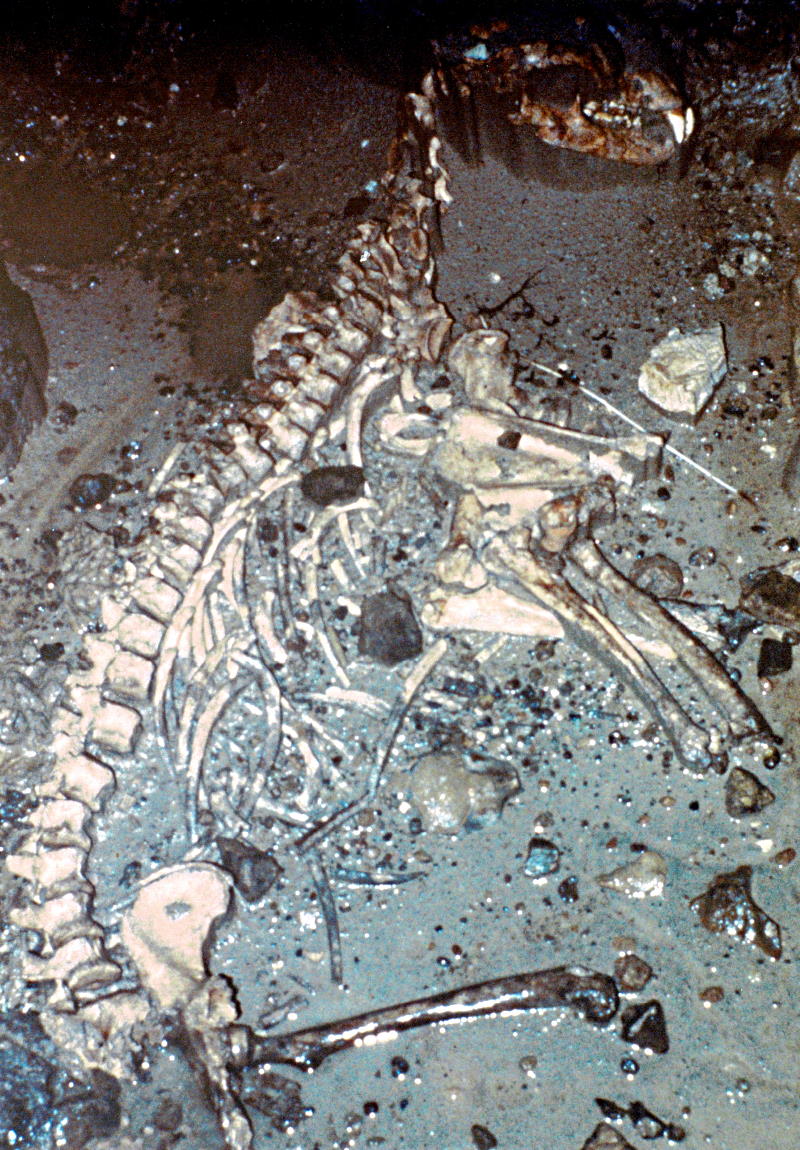Cave Paleontology
 The significant animals found in a cave are not necessarily the living ones. Caves provide a uniform temperature and humidity, and flood waters entering caves will occasionally wash in plant and animal remains. Pit caves may also trap animals that wander too close to the edge. Because of these characteristics, caves can provide a uniquely beneficial environment for preservation of fossil plant and animal species.
The significant animals found in a cave are not necessarily the living ones. Caves provide a uniform temperature and humidity, and flood waters entering caves will occasionally wash in plant and animal remains. Pit caves may also trap animals that wander too close to the edge. Because of these characteristics, caves can provide a uniquely beneficial environment for preservation of fossil plant and animal species.
 These photos show a paleontological dig in a Crawford county cave. At left, a 25,000 year old mixture of flat- headed peccary and dire wolf remains were exposed by Indiana State Museum paleobiologists five feet below the surface of a clay bank in a lower room. Their age puts these remains firmly in the late Pleistocene. At right is a black bear skeleton of similar age, preserved in sands at the bottom of a 90-foot vertical shaft. Such fully- articulated skeletons are quite rare; yet it is not uncommon to find trace fossils, such as bear wallows, in Indiana caves.
These photos show a paleontological dig in a Crawford county cave. At left, a 25,000 year old mixture of flat- headed peccary and dire wolf remains were exposed by Indiana State Museum paleobiologists five feet below the surface of a clay bank in a lower room. Their age puts these remains firmly in the late Pleistocene. At right is a black bear skeleton of similar age, preserved in sands at the bottom of a 90-foot vertical shaft. Such fully- articulated skeletons are quite rare; yet it is not uncommon to find trace fossils, such as bear wallows, in Indiana caves.
If you should encounter bones or other remains that appear to be old, do not attempt to remove them yourself! The location and orientation of each must be carefully documented to preserve their scientific value. Instead, please contact the Indiana State Museum at 317-232-1637 and report your findings. If you are unsure, the IKC can help put you in touch with the appropriate people.
Photos courtesy of R Richards / Indiana State Museum.